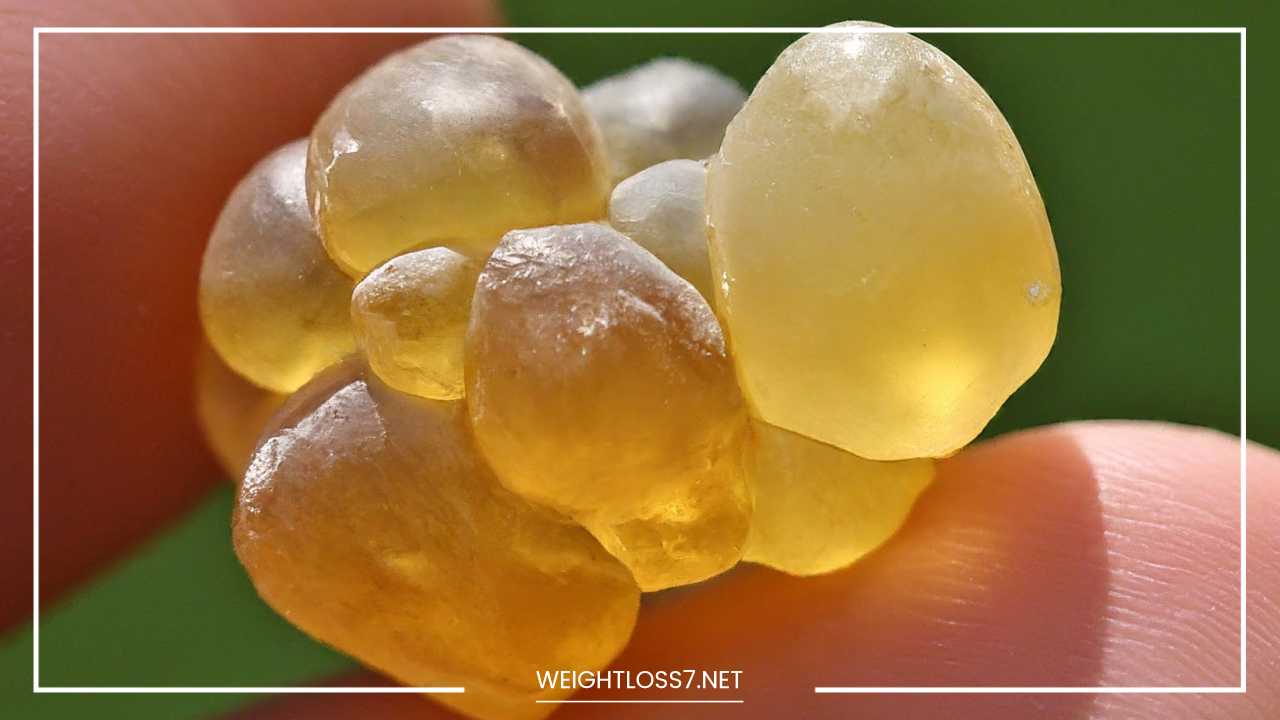Frankincense Uses and Health Benefits

Frankincense
Frankincense: The King of Aromas
Frankincense, a resinous substance harvested from trees of the genus Boswellia, has been revered across cultures for thousands of years. Its history is deeply entwined with spiritual practices and ancient rituals, making it a highly valued commodity throughout the ages.
Known for its aromatic qualities and therapeutic benefits, frankincense has been used in religious ceremonies, traditional medicine, and perfumery.
This blog post will explore the captivating world of frankincense, delving into its rich historical significance, the intricate production process, and its diverse benefits and applications. Join us as we uncover the timeless allure and versatile uses of this ancient resin.
A Tapestry of History
Frankincense’s journey through time is as captivating as its aroma, weaving a rich tapestry that spans millennia and continents. Originating in the arid regions of the Horn of Africa and the Arabian Peninsula, frankincense was an incredibly valuable trade item.
Its significance transcended borders, with the resin being traded along the ancient Silk Road—a crucial network of trade routes linking the East to the West.
Its value was so immense that it was often exchanged for gold and other precious commodities, highlighting its esteemed status in the ancient world.
Biblical and Religious Significance: Frankincense occupies a sacred space in various religious traditions.
In Christianity, it is famously known as one of the three gifts presented to the newborn Jesus by the Wise Men, alongside gold and myrrh.
This gesture underscored its importance and spiritual symbolism. Beyond Christianity, frankincense plays a significant role in numerous religious practices. In ancient rituals and ceremonies, it was used to purify spaces and individuals, facilitating meditation and fostering a sense of spiritual connection.
The fragrant smoke of frankincense was believed to carry prayers to the divine, enhancing its role in spiritual practices.
Ancient Egypt: The significance of frankincense in ancient Egypt cannot be overstated. The resin was integral to Egyptian culture and religious rituals.
It was employed in the embalming process, reflecting its association with the sacred and the afterlife. The Egyptians believed that the aromatic smoke of frankincense had protective qualities and was essential in honoring the gods.
Cleopatra, one of Egypt’s most renowned figures, is said to have indulged in baths infused with frankincense and milk—a testament to the resin’s luxurious and healthful properties.
Traditional Medicine: Beyond its religious and cultural roles, frankincense has a long-standing presence in traditional medicine systems.
In Ayurveda, the ancient system of medicine from India, frankincense is revered for its purported healing properties. It has been used to treat a variety of conditions, from respiratory issues to digestive problems, reflecting its versatile therapeutic benefits.
Similarly, in Traditional Chinese Medicine (TCM), frankincense is valued for its ability to promote the flow of Qi (energy) and improve blood circulation. It is used in various formulations to address ailments and enhance overall well-being.
Throughout history, frankincense has not only been a symbol of luxury and divinity but also a cornerstone of ancient medical practices.
Its journey from ancient trade routes to sacred rituals and traditional healing underscores its enduring legacy. This resin, with its complex history and multifaceted uses, continues to be a testament to the rich cultural and spiritual heritage it represents.
As we explore the world of frankincense, we gain insight into a substance that has been cherished for its profound impact on human history and culture.
The Frankincense Tree and Resin Production
The Boswellia tree, the source of the highly valued frankincense, is a remarkable plant adapted to thrive in harsh, arid environments.
These resilient trees are native to the arid regions of the Horn of Africa, the Arabian Peninsula, and parts of India.
Their ability to endure extreme heat and sparse water resources makes them uniquely suited for the production of frankincense resin.
The process of extracting frankincense involves a method known as “tapping.” Skilled harvesters make incisions in the bark of the Boswellia tree, which causes the milky white sap to seep out.
This sap is initially soft and resinous but gradually hardens upon exposure to air, transforming into the golden-brown, aromatic resin that is recognized as frankincense.
This hardening process takes several days to weeks, depending on environmental conditions, and results in the distinct, aromatic pieces of frankincense that are later collected.
There are several notable varieties of frankincense, each distinguished by its unique aroma and properties. Among these, the following are particularly renowned:
- Olibanum: Often considered the finest quality of frankincense, Olibanum is prized for its sweet, balsamic fragrance. It is typically used in high-quality incense and perfumes due to its rich, pleasant scent and its smooth, well-rounded aroma. The name “Olibanum” is derived from the Arabic word “al-lubān,” which means “the milk” and reflects the milky appearance of the raw resin.
- Hojari: Hojari frankincense is known for its woody and earthy notes, distinguishing it from other varieties. This type is often used in aromatherapy and incense due to its grounding, calming properties. Its robust aroma is associated with ancient rituals and is favored for its therapeutic benefits, often used to promote relaxation and mental clarity.
- Indian Frankincense: Native to India, this variety of frankincense has a slightly camphoraceous scent. It is commonly used in traditional Indian medicine and spiritual practices. The camphor-like aroma of Indian frankincense is noted for its invigorating and purifying qualities, making it a popular choice for both medicinal and ritualistic purposes.
Each type of frankincense brings its own distinctive characteristics to the table, contributing to the resin’s broad range of uses and its enduring appeal across different cultures and applications.
Whether utilized in religious ceremonies, traditional medicine, or modern aromatherapy, frankincense continues to be a symbol of ancient wisdom and natural beauty.
The Benefits of Frankincense
Frankincense, derived from the resin of Boswellia trees, offers a diverse array of benefits that support both physical and emotional well-being. Its uses span from ancient rituals to modern health applications, reflecting its versatility and enduring appeal.
Aromatic Properties: One of the most celebrated benefits of frankincense is its aromatic properties. The resin’s calming and uplifting scent has been found to effectively reduce stress, anxiety, and depression.
In aromatherapy, frankincense is often diffused or inhaled to create a soothing environment that promotes relaxation and mental clarity.
Its aroma can help balance emotions, improve mood, and foster a sense of tranquility, making it a popular choice for those seeking to enhance their emotional well-being.
Anti-inflammatory Effects: Frankincense contains compounds, such as boswellic acids, known for their potent anti-inflammatory effects.
These compounds make frankincense particularly beneficial for conditions characterized by inflammation, such as arthritis and asthma.
By reducing inflammation, frankincense can help alleviate pain and improve joint mobility in arthritis sufferers.
Additionally, its anti-inflammatory properties can benefit those with respiratory issues, helping to ease symptoms of asthma and bronchitis.
Skincare: The resin’s benefits extend to skincare, where it is valued for its ability to improve skin health.
Frankincense is commonly included in skincare products for its antioxidant properties, which help protect the skin from oxidative stress and damage caused by environmental factors.
It is also known to reduce the appearance of wrinkles, scars, and acne. By promoting cell regeneration and improving skin elasticity, frankincense can contribute to a youthful, radiant complexion.
Digestive Health: Traditionally, frankincense has been used to support digestive health. Its ability to reduce bloating, gas, and inflammation in the gut makes it a valuable natural remedy for digestive discomfort.
By soothing the digestive tract and promoting healthy digestion, frankincense can help alleviate symptoms of gastrointestinal issues and support overall gut health.
Immune System: Emerging research suggests that frankincense may offer benefits for the immune system as well.
Some studies indicate that the resin has immunomodulatory properties, which means it may help enhance the body’s natural defenses against infections. By supporting immune function, frankincense may contribute to overall health and resilience.
Frankincense is a multifaceted resin with a range of benefits that support physical health and emotional well-being.
Whether used for its aromatic, anti-inflammatory, skincare, digestive, or immune-boosting properties, frankincense continues to be a cherished substance in both traditional and modern health practices.
Uses of Frankincense
Frankincense, with its rich history and diverse applications, continues to play a significant role in various aspects of our lives. Its unique properties make it a versatile substance used across different domains:
Aromatherapy: Frankincense essential oil is highly valued in aromatherapy for its ability to promote relaxation and mental clarity.
When diffused or inhaled, the oil’s soothing aroma helps reduce stress, anxiety, and tension. It is often used to create a calming atmosphere, enhance meditation practices, and improve focus.
The therapeutic properties of frankincense can also aid in emotional balance and mental well-being, making it a popular choice for those seeking to support their emotional health.
Incense: The use of frankincense incense has deep roots in religious and spiritual traditions. For centuries, its fragrant smoke has been employed in religious ceremonies, rituals, and meditation practices.
The resin’s aromatic properties are believed to help purify the space, elevate spiritual experiences, and foster a deeper connection during meditation.
Frankincense incense remains a staple in various faith practices and continues to be used to enhance spiritual environments.
Skincare: In the realm of skincare, frankincense is celebrated for its rejuvenating and restorative properties. Frankincense-infused products, such as creams, serums, and oils, are widely available and used to address a variety of skin concerns.
Its antioxidant and anti-inflammatory properties make it effective in reducing the appearance of wrinkles, scars, and acne.
By promoting skin cell regeneration and improving elasticity, frankincense helps maintain a youthful and healthy complexion.
Perfumery: The exquisite fragrance of frankincense makes it a coveted ingredient in high-end perfumery. Its warm, balsamic aroma adds depth and complexity to perfumes, contributing to their unique and luxurious scent profiles.
Frankincense is often blended with other essential oils and fragrance notes to create sophisticated and long-lasting perfumes, valued for both its olfactory appeal and its ability to enhance other aromatic elements.
Culinary: In some cultures, frankincense is used as a flavoring agent in food and beverages. Although less common in modern cuisine, its resin has been utilized historically in culinary practices to impart a distinctive flavor.
Its use in cooking and beverage preparation reflects its versatility and the diverse ways in which it can be incorporated into daily life.
Frankincense’s applications span from enhancing mental well-being and spiritual practices to contributing to skincare and perfumery.
Its rich history and multifaceted uses continue to make it a valuable and cherished substance in various aspects of contemporary and traditional life.
Incorporating Frankincense into Your Life
Frankincense can be seamlessly integrated into various aspects of daily life to harness its numerous benefits. Here are several ways to experience the advantages of this ancient resin:
Aromatherapy: One of the most popular ways to use frankincense is through aromatherapy. Simply add a few drops of frankincense essential oil to a diffuser to disperse its soothing aroma throughout your home or workplace.
This practice can help create a calming environment, reduce stress, and enhance mental clarity. The pleasant scent of frankincense promotes relaxation and can improve your overall mood, making it an excellent addition to your daily routine.
Bath: For a more immersive experience, add a few drops of frankincense essential oil to your bathwater. The warm, fragrant bathwater helps relax your body and mind, providing a tranquil and rejuvenating experience.
This practice not only soothes aching muscles but also offers a moment of self-care and stress relief. The aromatic benefits of frankincense combined with the relaxing effects of a bath make it a perfect choice for winding down after a long day.
Massage: Incorporating frankincense essential oil into your massage routine can enhance its therapeutic benefits. By blending the oil with a carrier oil, such as coconut or jojoba oil, you can use it to soothe tired muscles and relieve stress.
The anti-inflammatory and relaxing properties of frankincense make it an ideal addition to your massage regimen, promoting relaxation and improving overall well-being.
Skincare: To boost your skincare routine, choose products that contain frankincense. Many skincare lines incorporate this beneficial resin into their formulations to improve skin health.
Frankincense-infused creams, serums, and oils can help reduce the appearance of wrinkles, scars, and acne. Regular use of these products can enhance your skin’s appearance, providing a youthful and radiant glow.
Meditation: Burning frankincense incense during meditation can create a serene and focused atmosphere. The aromatic smoke helps to purify the space and uplift the spirit, making it easier to achieve a deeper state of relaxation and concentration.
The calming effects of frankincense incense can enhance your meditation practice, providing a more profound sense of peace and mindfulness.
By incorporating frankincense into these various aspects of your life, you can enjoy its multifaceted benefits and enrich your overall well-being.
Final Word
Frankincense, with its profound historical significance and wide-ranging benefits, remains a captivating substance cherished globally.
Its ability to promote relaxation, enhance skin health, and support spiritual well-being underscores its versatility and value. By exploring and embracing its diverse applications, you can experience the holistic advantages this ancient resin offers.
Whether used for calming aromatherapy, rejuvenating skincare, or enriching spiritual practices, frankincense provides a natural and effective means of enhancing your overall quality of life.
Understanding and integrating frankincense into your daily routine allows you to tap into the enduring treasures of this precious, time-honored substance.

















